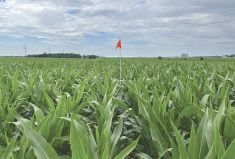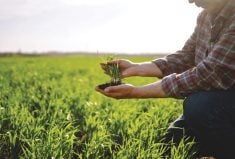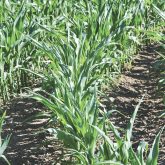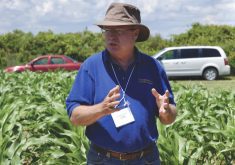Ordinarily, rebranding is an exercise that involves a change in marketing direction in a changing marketplace or inside a changing company. We see it so often in agriculture. A product gets rebranded because of new use patterns or new tank mixes, or just because of corporate restructuring.
Occasionally, though, a concept gets rebranded because of a new and important insight, such as the focus of this particular article: the changing of “soil productivity” into “soil profitability.”
Yes, there have been efforts in the past to think of how much money is lost through various practices relating to soil management. In 2014, a University of Minnesota researcher measured the value of inputs found in “snirt” — snow and dirt — deposited into ditches by wind erosion at US$82 per acre.
Read Also

Agronomists share tips for evaluating new crop products and tech: Pt. 3
With new products, new production practices and new technology converging on the agriculture industry at a frenetic pace in recent…
That same year, a researcher from Iowa State University found similar losses from no-till fields that had less than 20 per cent cover, proving there are dollars in mixing no till with grass waterways and cover crops.
There have been countless initiatives to reduce soil, wind and water erosion in Europe as well, some with budgets in the tens of millions of dollars.
The challenge, though, is to think beyond the current growing season, and Jonathan Zettler understands how tough that can be. It’s hard to get someone thinking in terms of the next three years when the current growing season is dominated by crop staging, monitoring for pests and applying fertilizers and inputs, all with an end vision on harvesting and markets. Yet Zettler believes that rebranding soil health into something economic would have the effect of pulling growers into a change in mindset and not pushing them into it.

“The number one thing a farming operation should be able to do is convert a resource into a marketable commodity at a profit,” says Zettler, managing agronomist with Fieldwalker Agronomy Ltd., based in Minto, Ont. “If adding practices doesn’t do anything to create value for those investing time, material or labour, why do it in the first place? Everyone in society responds to incentives, whether or not they’re a farmer.”
Referring to the many efforts to reduce soil erosion, Zettler echoes the findings of the two U.S. university researchers and the lack of dollar values associated with the loss of topsoil (not the value of inputs lost). Although there are obvious costs of soil erosion, the hard part is quantifying those losses and the impact on most farming operations. How can soil type or depth of topsoil be valued? Is the soil being eroded off your farm or your neighbour’s? There are also costs associated with the loss of organic matter — and nutrients and inputs —that can be washed or blown away.
Zettler, who is a certified crop advisor as well as a chartered professional accountant, maintains that changing the terminology brings a reframed focus and also helps address aspects that actually matter.
“The term ‘soil health’ could lead an operation down the path of choosing to pick practices that are not measurable or meaningful for the four things that matter in any business,” he says, citing the formula of “price x volume – cost = gross margin.”
Zettler cites a quote from Harrington Emerson, an American efficiency engineer and business theorist, who stated, “The man who grasps principles can successfully handle his own methods. The man who tries methods, ignoring principles, is sure to have trouble.”
“In some respects, those who want to make soil productivity a focus would benefit from taking a crop physiology course to understand the limitations of the various yield components and provide a focus on which factors may be limiting,” adds Zettler.
A focus on goals
By changing soil health to soil profitability, Zettler is not trying to diminish the importance of nutrient cycling, soil organic matter, water-holding capacity, aggregate stability or any other property associated with current practices. Instead, he changes the mindset from one of doing things for “soil health” to doing those that provide a return on investment.
The change in mindset is subtle, but it harkens to a point made years ago about how farmers introduce themselves. The difference between “I’m president and CEO of Sunshine Acres” and “I’m a farmer” may seem trivial or even boastful. Yet the former introduction has the potential to broaden a farmer’s outlook, enabling them to see opportunities that might not have occurred with the simpler, more familiar greeting.

“It is a change in thinking because instead of viewing it as something that’s incremental, it becomes core to the business,” says Zettler. “Soil is your most expensive and critical asset, so focusing on ensuring that returns from it are profitable is key to ensuring a farm operation remains viable.”
Another example he cites is that after completing a course or reading an influential book, Zettler finds it difficult to look at things around him the same way as before.
Those who advocate for soil health are correct in asserting that not all soil profitability measures can be solved with outside or purchased inputs. In many instances, it’s a change in management — from the farmer and on their farm — that’s required, such as reducing soil compaction.
Today or tomorrow?
The core of any conversation dealing with rebranding soil health to soil profitability, Zettler says, is whether a grower views their management decisions in a proactive or reactive light. Safety nets such as replant policies or the ability to apply products in-crop (like herbicides) have, in many ways, encouraged what Zettler believes is a more reactive approach to farm management. The practices can be dealt with later but with less effectiveness.
“It really depends on what your time frame is,” he says.
“Some farmers think in hours, days, weeks, months but I would argue that those playing with soil health or profitability today are likely thinking in years or decades. The longer you stretch out your decision-making criteria or the impact it could have, the greater the shift in the mindset of your decisions.”
Zettler cites an article from Direct Driller, a farm publication based in the United Kingdom, which addressed the use of non-traditional inputs as part of the recommendations for a farm.
The article’s author implied that too frequently, the advice they were getting was coming from those with a vested interest — what Zettler calls a bias towards using certain tools or products that they’re familiar with. Recommending and spraying 2,4-D to control Canada fleabane on this side of the Atlantic is an easier recommendation to implement versus a three-year integrated weed management plan that may involve the use of cereal rye.
“From the perspective of the retailer, how would you get compensation for building and establishing a three-year plan?” asks Zettler. “Will the advice side for farms continue to be a shift towards the separation of recommendations and where growers purchase their inputs?”
Another component of this discussion involves what Zettler calls “second-order thinking” to understand that a decision made today to not address an issue could lead to tomorrow’s weed control challenge or soil erosion mishap. Viewed in a proactive sense, a grower or farm manager is more likely to conduct on-farm trials to determine what works prior to implementing a course of action.
“The current technology capabilities will separate those who make the time to do trials and try things that will make fundamental shifts in their business and those who don’t,” says Zettler.
“If you view things in a proactive light, you’re more likely to see that there are practices that your current management is unable to address. By looking at some of those currently branded under ‘soil health,’ you can adjust your management to ensure your labour and capital provide an acceptable return.”
















